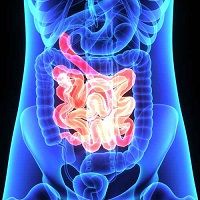New Approaches to Managing Postoperative Ileus
A recent review article provided updated information on classification systems, preventive techniques, pathophysiological mechanisms, and treatment options for postoperative ileus.

Postoperative ileus (POI) is a frequent complication of several types of surgery, with patients undergoing abdominal surgery at greatest risk, and increases morbidity and costs. The June 2015 issue of Clinical Nutrition assembled a wealth of knowledge in a review written by a team of researchers from the United Kingdom’s Nottingham Digestive Diseases Centre National Institute for Health Research Biomedical Research Unit. The review updates the reader on classification systems, preventive techniques, pathophysiological mechanisms, and treatment options for POI.
Compared to other surgical complication, POI’s classification system is quite simple. Due to a lack of consensus and research to clarify and validate definitions, classification is practical rather than evidence-based.
POI’s pathophysiology is related to neurogenic, inflammatory, humoral, fluid and electrolyte, and pharmacologic components. Patients who have fluid overload or receive exogenous opioids are at elevated risk. Those with neurohormonal dysfunction, and gastrointestinal stretch are, too.
Minimal access (laparoscopic) surgery seems to reduce patients’ systemic inflammatory response, with parallel reductions in the duration of POI if it develops.
Some surgeons have used nasogastric tubes routinely, hypothetically to drain the stomach, prevent POI and protect anastomoses. Clinical studies indicate that nasogastric placement does none of these things, nor does it improve patient comfort or reduce hospital stay. The authors recommend avoiding nasogastric tubes whenever possible.
The authors encourage surgeons to include salt avoidance, water restriction in the periopertative period, and gum chewing in their preventive protocols. They also recommend the peripherally acting µ-opioid receptor antagonist alvimopan to accelerate gastrointestinal recovery following surgeries that include partial bowel resection with primary anastomosis.
This review also looks at miscellaneous studies of a handful of other interventions—coffee, prokinetics, early oral nutrition, laxatives and daikenchuto (a Japanese herbal). Data is preliminary for most of these interventions, with some more helpful than others. Magnesium seems to hold the most promise.
The authors note that POI is often inevitable, but research is delivering more information and interventions rapidly.